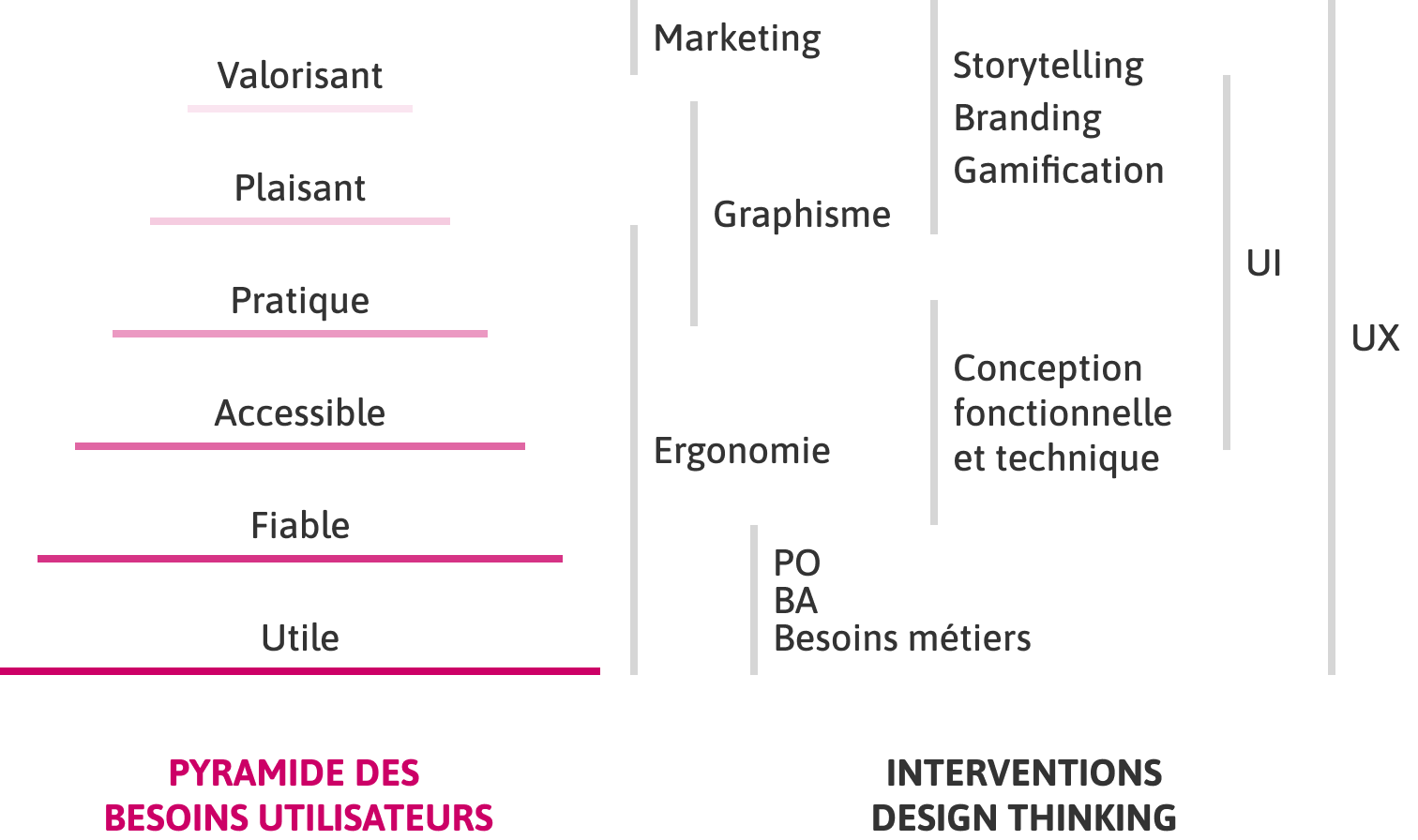The user experience, a lever for success

January 16, 2022

What is user experience?
When you rate a service, product or application with 1 or 5 stars, you are rating your user experience. It's everything that makes up your user experience, what makes you adopt or reject what is offered to you.
A good UX is a good ergonomics ?
Yes, but not only.
Usability addresses the usefulness, accessibility and efficiency of the application.
But the user will only adopt an application if he/she feels pleasure in using it. UX therefore also embraces an emotional dimension: visual identity, narration, playfulness...
And even if an application is ergonomic and pleasant, it will not give satisfaction if it is permanently buggy, or only partially meets the user's needs.
A good UX is therefore the result of a common approach by all the actors of the project. Depending on the context, different professions are involved. There are many debates about the prerogatives of each. What counts is to work together in a design thinking approach.

We hear a lot about UX in IT these days... Why this craze?
We have always known the importance of user experience. Long before Apple, we could dream of a beautiful garment, a beautiful house or a beautiful car.
But for a long time, IT projects were seen as IT projects first and foremost. But no matter how well you manage your project from a technical point of view, if the user doesn't want it, it will remain in the box.
Clients have become aware of this reality. They now know the benefits of user-oriented design, design thinking and the UX approach.
What are these benefits?
- Better qualify the needs. Involving a panel of users, even a small one, allows to detect the pitfalls and to validate the adequacy of the solutions to the expectations.
- Unite the actors. Participative codeign workshops facilitate the adhesion of stakeholders and future users, especially for projects involving business organization changes.
- Specify faster and more reliably. Mock-ups and prototypes constitute a language understood by all (business, IT, users, etc.) which accelerates the design and validation of specifications.
- Facilitate development. A design system provides developers with clear information on functional requirements and interface expectations, thus reducing correction iterations.
- Continuous improvement. Taking user feedback into account ensures an optimized ROI and TCO.
And concretely, what does the UX approach consist of?
The UX approach is based on 2 key principles:
Unite: involve all stakeholders, and first and foremost the users.
Adapt: be agile and adjust our methods to the context and organization of the project.
We follow 4 main phases:
Exploration: qualify the users and their needs (information gathering, interviews, research...)
Ideation: imagining the scenarios of use (workshops of codesign with the trades, the IT, the users...)
Definition: design an intuitive and rewarding interface (mock-up in participative workshops, prototyping, design system...)
Evaluation: test the prototypes, evaluate accessibility, audit the existing system, produce recommendations.
The final word?
3 quotes:
- "A user interface is like a joke: if you have to explain it, it's not that good."
Anonymous
- "It seems that perfection is reached not when there is nothing left to add, but when there is nothing left to take away."
Antoine de Saint-Exupéry
- "If you think good design is expensive, you should estimate the cost of bad design."
Ralf Speth
Share

